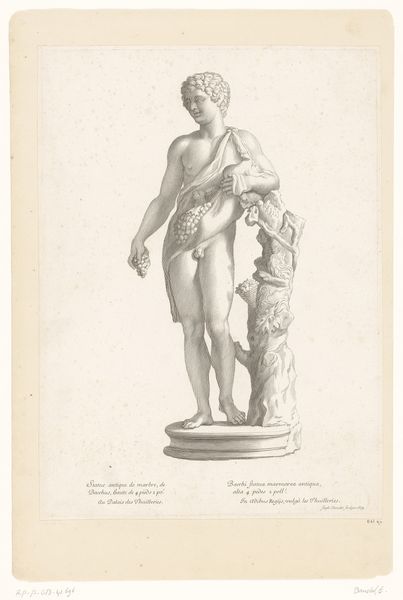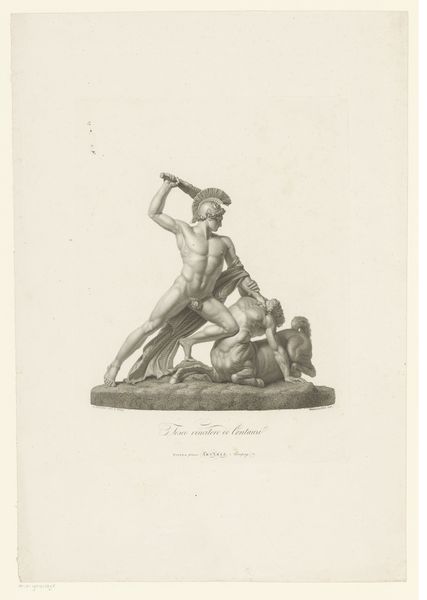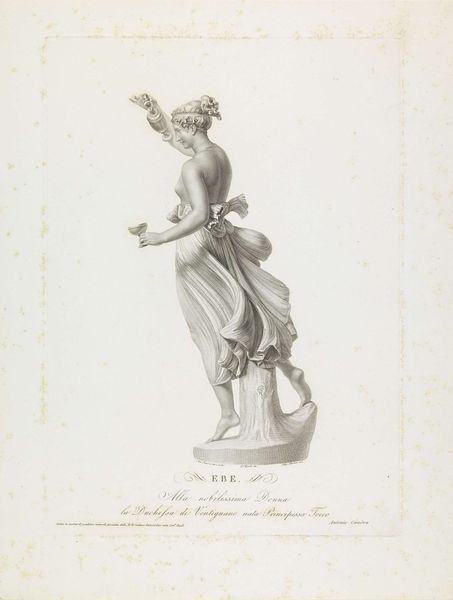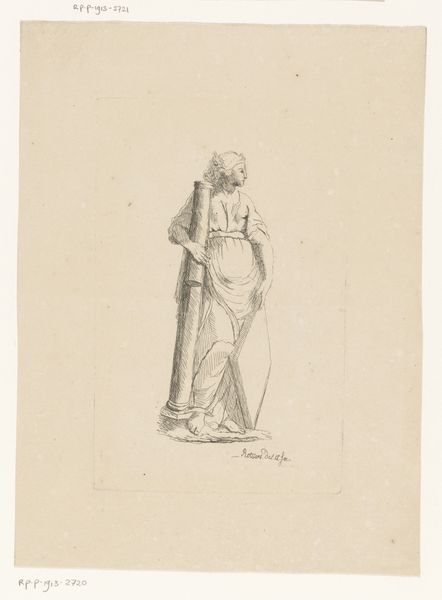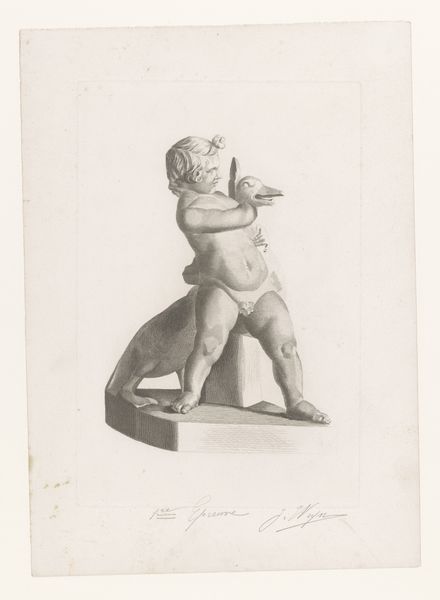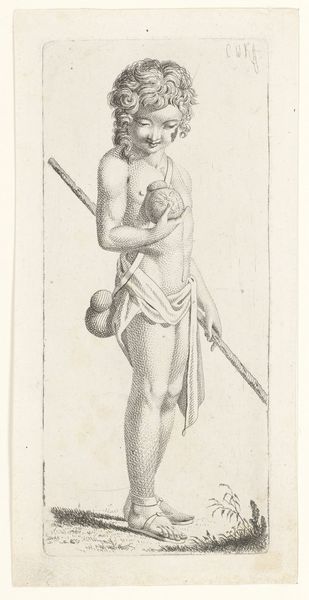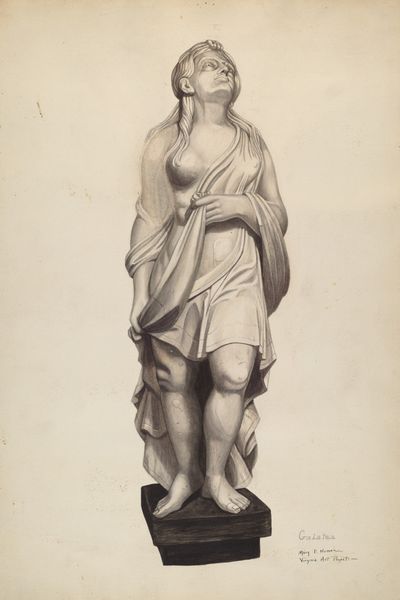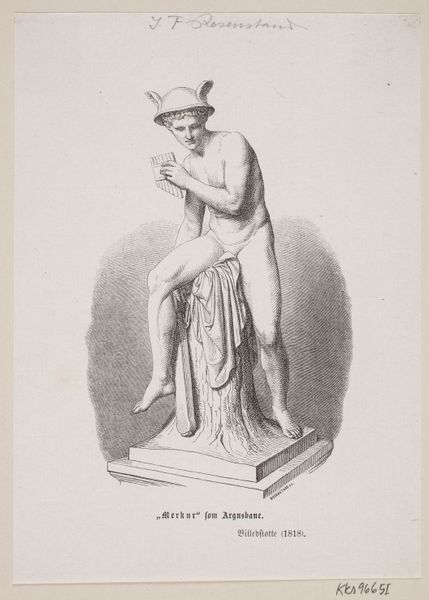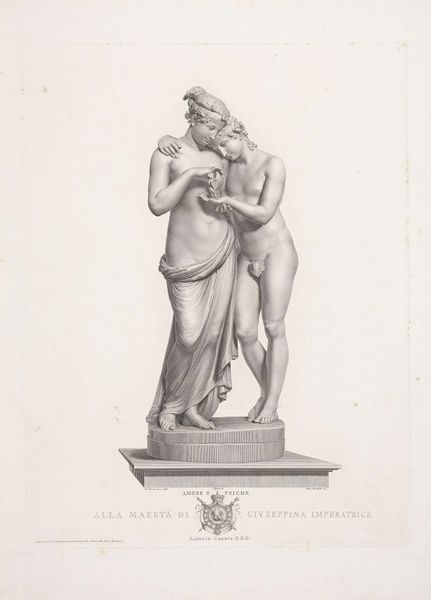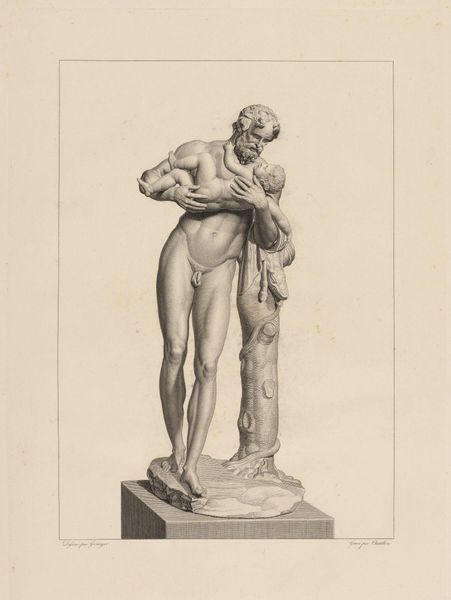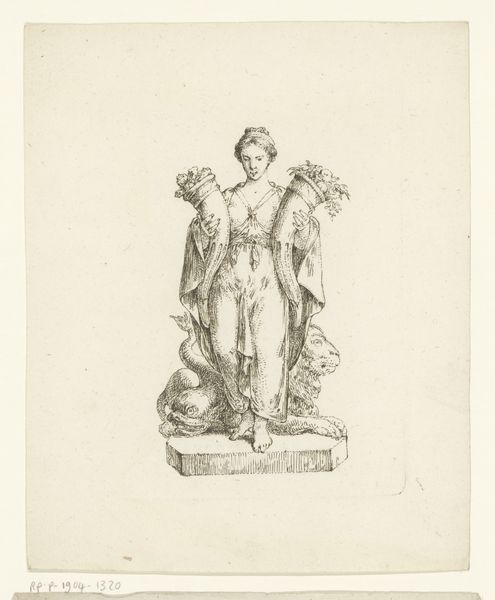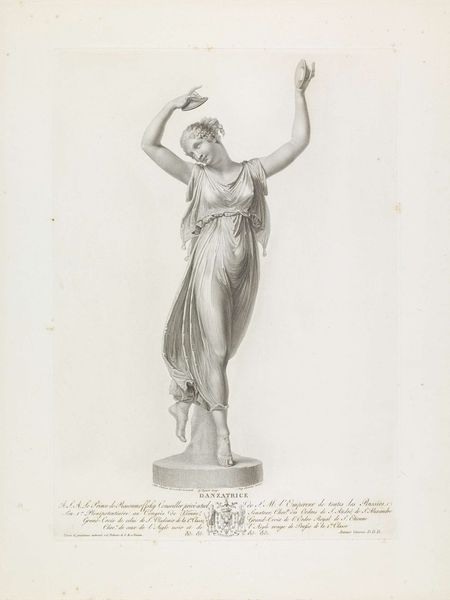
drawing, pencil, graphite
#
portrait
#
pencil drawn
#
drawing
#
neoclacissism
#
pencil sketch
#
charcoal drawing
#
figuration
#
pencil drawing
#
pencil
#
graphite
#
pencil work
#
academic-art
#
nude
#
graphite
Dimensions: height 454 mm, width 324 mm
Copyright: Rijks Museum: Open Domain
Curator: Look at the delicate graphite strokes in Domenico Marchetti's "Danzatrice," likely created sometime between 1790 and 1844. There's a real stillness to this figure. A certain quiet grace. Editor: It's haunting, in a way. This nude figure, positioned almost as a sculpture on a pedestal, exudes this incredible sense of vulnerability and perhaps even a commentary on the objectification of the female form during that Neoclassical period. I feel for her. Curator: The choice of graphite or pencil allows for subtle gradations in tone. Notice how Marchetti uses the material to suggest both the smoothness of skin and the folds of draped fabric. There is, of course, no color beyond the subtle variance afforded by graphite itself. We are drawn to the precise hatching used to define the planes of her body. It speaks of both labor and economy. Editor: It's striking how the rendering of the dancer positions her within a very specific power dynamic. Consider who this image was intended for and within what structures of viewership: How does the artist's process and presentation reinforce class and gender roles by constructing and codifying what it meant to be perceived as an object of beauty or as “art"? Curator: Her pose and attire are highly stylized; the influence of Neoclassicism is quite evident in her contrapposto stance. This reflects the artistic production methods prevalent at that time— where careful and controlled lines spoke of discipline and an academic commitment to emulating classical forms. There are many sketches like this. These works often became tools for something else entirely. Editor: Yes, her constructed, classical beauty normalizes power relations and controls narrative, which is unsettling. Also, who was Carolina Lady Cawdor and what relation did she have to the dancer. We might ask if "Danzatrice" portrays the body and adornments as symbols to legitimize power through constructed displays of taste and luxury, reinforcing dominant cultural values around gender. Curator: Examining it in this way, one gets a strong sense of how art becomes an arena for encoding not just form and technique but very complex messages around wealth, social status, and access. The raw, unassuming quality of pencil belies a carefully constructed message. Editor: This artwork reminds us that every object has a story of both making and consumption that must be reckoned with to illuminate the nuances of identity and value it held in broader society.
Comments
No comments
Be the first to comment and join the conversation on the ultimate creative platform.

